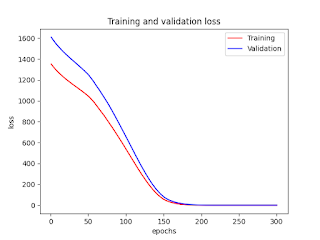Example:
"Prior Probability"
P(H1) = Probability of Computer Science (CS) major = (# of CS major) / (# of students in total)
P(H1) = 0.03 (given)
P(H2) = Probability of Non-CS major = 1 - P(H1)
P(H2) = 1 - P(H1) = 1 - 0.03 = 0.97
D: A person is meticulous and works in a well-organized manner.
"Posterior Probability"
P(H1|D): Probability of H1 after D is observed for a person.
A major of a person with D is CS:
P(H1|D) * P(D) = P(D|H1) * P(H1)
P(H1|D) = P(D|H1) * P(H1) / P(D)
P(D) = P(H1) * P(D|H1) + P(H2) * P(D|H2)
P(H1|D) = P(D|H1) * P(H1) / (P(H1) * P(D|H1) + P(H2) * P(D|H2))
P(H1|D) = P(H1) / (P(H1) + P(H2) * P(D|H2) / P(D|H1))
P(D|H2) / P(D|H1) = 1/4 (Given. It means a ratio of people of non-CS major with D and people of CS major with D is 1/4; more people of CS major is D compared to non-CS major people.)
P(H1|D) = 0.03 / (0.03 + 0.97 * 1/4) = 0.11009... ~ 0.11
The Financial Journal is a blog for all financial industry professionals. This blog has been, and always will be, interactive, intellectually stimulating, and open platform for all readers.
AdSense
Subscribe to:
Post Comments (Atom)
Deep Learning (Regression, Multiple Features/Explanatory Variables, Supervised Learning): Impelementation and Showing Biases and Weights
Deep Learning (Regression, Multiple Features/Explanatory Variables, Supervised Learning): Impelementation and Showing Biases and Weights ...

-
This is a great paper to understand having and applying principles to day-to-day business and personal lives. If you do not have your own ...
-
Black-Litterman Portfolio Optimization with Python This is a very basic introduction of the Black-Litterman portfolio optimization with t...
-
0_MacOS_Python_setup_for_Quandl.txt # Go to: https://www.quandl.com/ # Sign up / in with your email address and password # Run Termina...

No comments:
Post a Comment